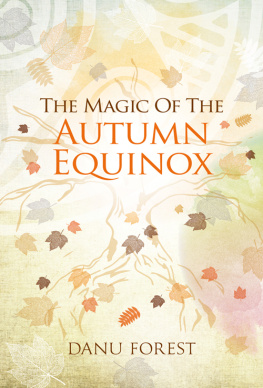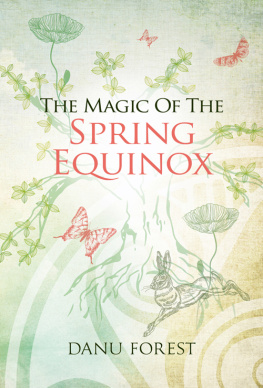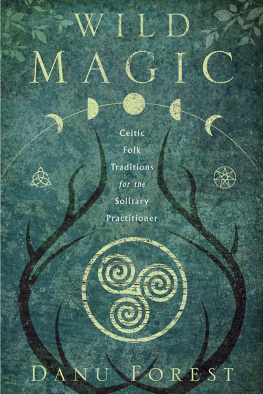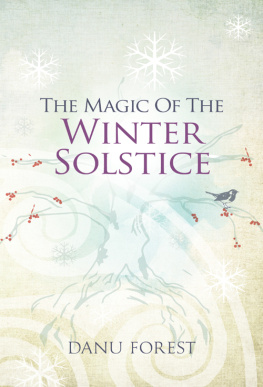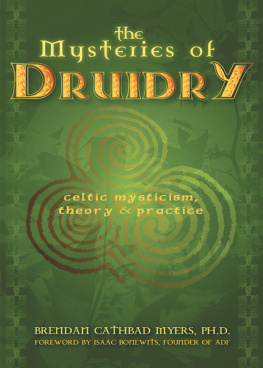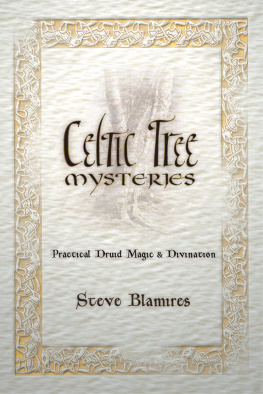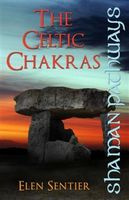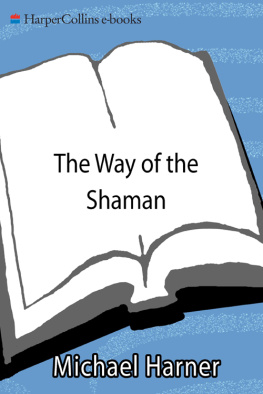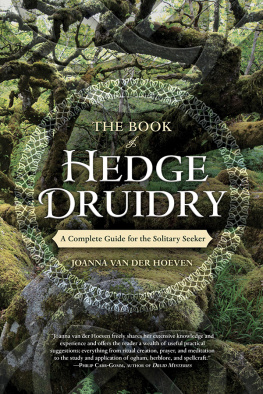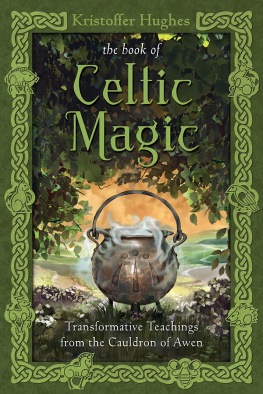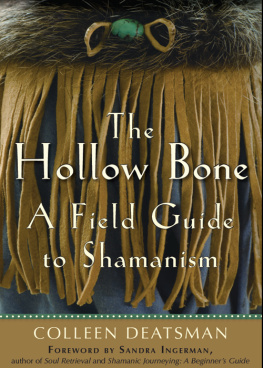WHAT PEOPLE ARE SAYING ABOUT
THE DRUID SHAMAN
A sound, practical introduction to a complex and wide-ranging subject. Danu Forests guidance chimes closely with my own experience of working with spirits over many years. Integrating folk traditions, literary sources and archaeology with contemporary practice, Danu combines visually strong and spiritually apposite ideas with sensitive advice concerning our relations with spirit, as well as working with sacred sites. As Danu says, how we perceive the spirits we connect with as Druids does make a difference.
Having been plugging the notion of Druidry as the native shamanic tradition of Britain and Europe since 1974, its good to see that its increasingly catching on, not only amongst fellow Druids, but also amongst archaeologists. I believe we are heading in a direction that links us very firmly with the spirit of ancient Druidry. This is what I call rekindling the sacred fire of Druidry, and I believe Danu Forests The Druid Shaman will play a part in this rekindling.
Philip Shallcrass -Greywolf Chief of the British Druid Order.
Another slim volume. Cant be much in that, you might think. And if you do, you would think wrong. This is an introduction to a complex subject and to write a primer with such clarity as this author has done requires a deep understanding of the subject and an equally deep understanding of how to communicate that to others. I particularly enjoyed the emphasis in this book on balance, on personal responsibility, and on service.
That is why this book introduces you to the basics and no more. You have to make the journey; you have to establish a relationship with the worlds beyond and those who live there. No one else can do that for you and there is no system beyond what you will learn here. You can read more deeply into the subject if you wish, but that wont make the journey any easier. There are no secrets beyond the one revealed in this bookIt is your journey and your relationship. You can only learn more about that by doing it, by journeying as often as you can.
Clear and unpretentious, based on good and thorough research as well as sensible practice, and full of sound advice; you really do not need any other introduction to this subject.
Greame Talboys
First published by Moon Books, 2013
Moon Books is an imprint of John Hunt Publishing Ltd., Laurel House, Station Approach,
Alresford, Hants, SO24 9JH, UK
www.johnhuntpublishing.com
www.moon-books.net
For distributor details and how to order please visit the Ordering section on our website.
Text copyright: Danu Forest 2013
ISBN: 978 1 78099 615 8
All rights reserved. Except for brief quotations in critical articles or reviews, no part of this book may be reproduced in any manner without prior written permission from the publishers.
The rights of Danu Forest as author have been asserted in accordance with the Copyright,
Designs and Patents Act 1988.
A CIP catalogue record for this book is available from the British Library.
Design: Stuart Davies
www.stuartdaviesart.com
Printed and bound by CPI Group (UK) Ltd, Croydon, CR0 4YY
We operate a distinctive and ethical publishing philosophy in all areas of our business, from our global network of authors to production and worldwide distribution.
Introduction
I have been in a multitude of shapes,
Before I assumed a consistent form.
I have been a sword, narrow, variegated
I have been a tear in the air,
I have been the dullest of stars.
I have been a word among letters,
I have been a book in the origin.
I have been the light of lanterns
I have been a course, I have been an eagle.
I have been a coracle in the seas:
I have been compliant in the banquet.
I have been a drop in a shower;
Taliesin, Cad Goddeu
These words, recorded in the 14th century as earlier works by the 6th-century shaman bard Taliesin, vividly convey a profound experience of communion with what could be called today the world soul or Anima Mundi. This state of connection between the individual and the sum of all things or beings upon the earth is a deeply shamanic state of consciousness, transcending the constraints of the body and entering into an expanded awareness, encompassing an infinite number of points of view simultaneously. Here the visionary qualities and potential of the Celtic bardic tradition result in the poet or bard drawing in the gift of divine inspiration from the spirit world, experiencing this expanded ecstatic awareness, and attaining the knowledge or wisdom of the gods.
The Cad Goddeu, or battle of the trees, is an intriguing poem about a conflict between the mortal world and the Welsh Otherworld, Annwn. Here we encounter the liminal point where both worlds meet seen through the eyes of the magician Gwydion, on one layer, and through the bardic medium of Taliesin, on another. In its lines we encounter world upon world, experience upon experience, layered and compacted upon one another, connecting, challenging, locked in exchange and interchange. This is the realm of the Celtic, or druid shaman; meeting the Otherworld and the realms of spirit, yet firmly placed in the traditions and knowledge of our Celtic-Irish and British ancestral lore, allied with the trees and the spirits of these green isles, and drawing upon a wellspring of indigenous wisdom going back millennia.
While a great deal has been lost over the last two thousand years, it is still possible to track our way along the old roads, and retrace our ancestral footsteps into a relationship with spirit that is still vividly and passionately Celtic, and druidic in nature. In this book, we shall be exploring the realm of the druid shaman, primarily through experience and practice. Drawing from the deep roots of Celtic druidry, and its surviving literature, we shall seek divine inspiration for ourselves, and discover our own ways of working, drawn from their knowledge. The path ahead relies on our common sense, and an intuitive gift for feeling the way, peeling back layers of meaning, and boldly exploring the realms of spirit, aided by allies that walked these roads with our kin, millennia ago. They will see us through today as they did before.
C HAPTER 1
The First Signposts
Who were the Celts?
In order to explore the practices of the druid shaman, we must first briefly clarify our definition of some familiar terms. The people from whom we get the term Celt, the Keltoi were first mentioned by the Greek historian Herodotus, as a group of people living in the region of the river Danube around 550BC. These people were distinctive in their incredible art, highly sophisticated culture, and material wealth. They were especially rich in gold. By this time it is believed that these people were a point of interchange with the Greeks, while also being part of a wider culture sharing common languages, customs and beliefs. These Celts were an ethno-linguistic group of tribal Iron Age societies that spanned a large part of northern and western Europe as far as Britain and Ireland. They shared common values and traditions, with variations over time and from region to region. Contrary to popular belief, they were not a distinct genetic race, although some Celtic customs and linguistic similarities survive today in most Celtic areas.


